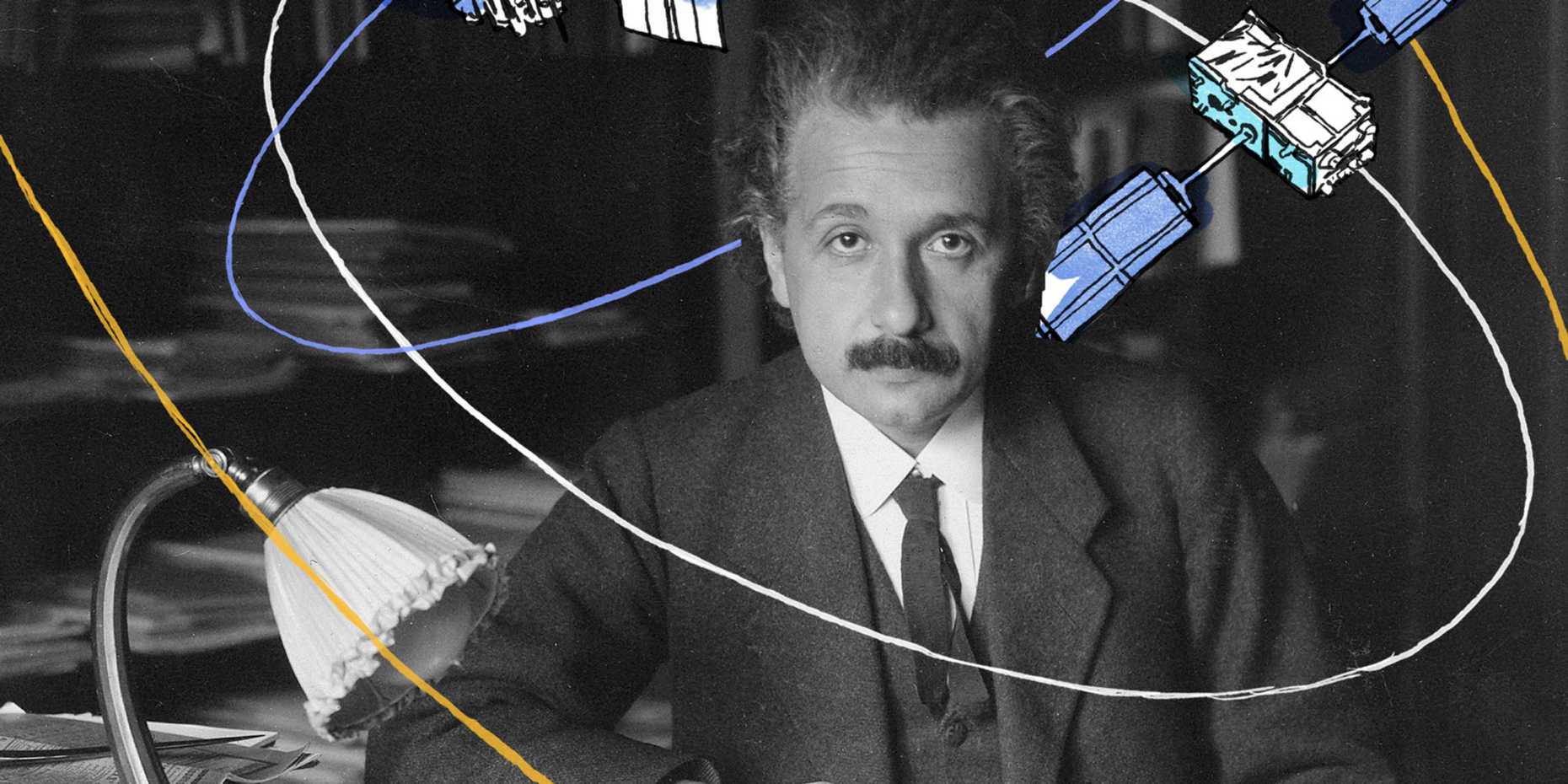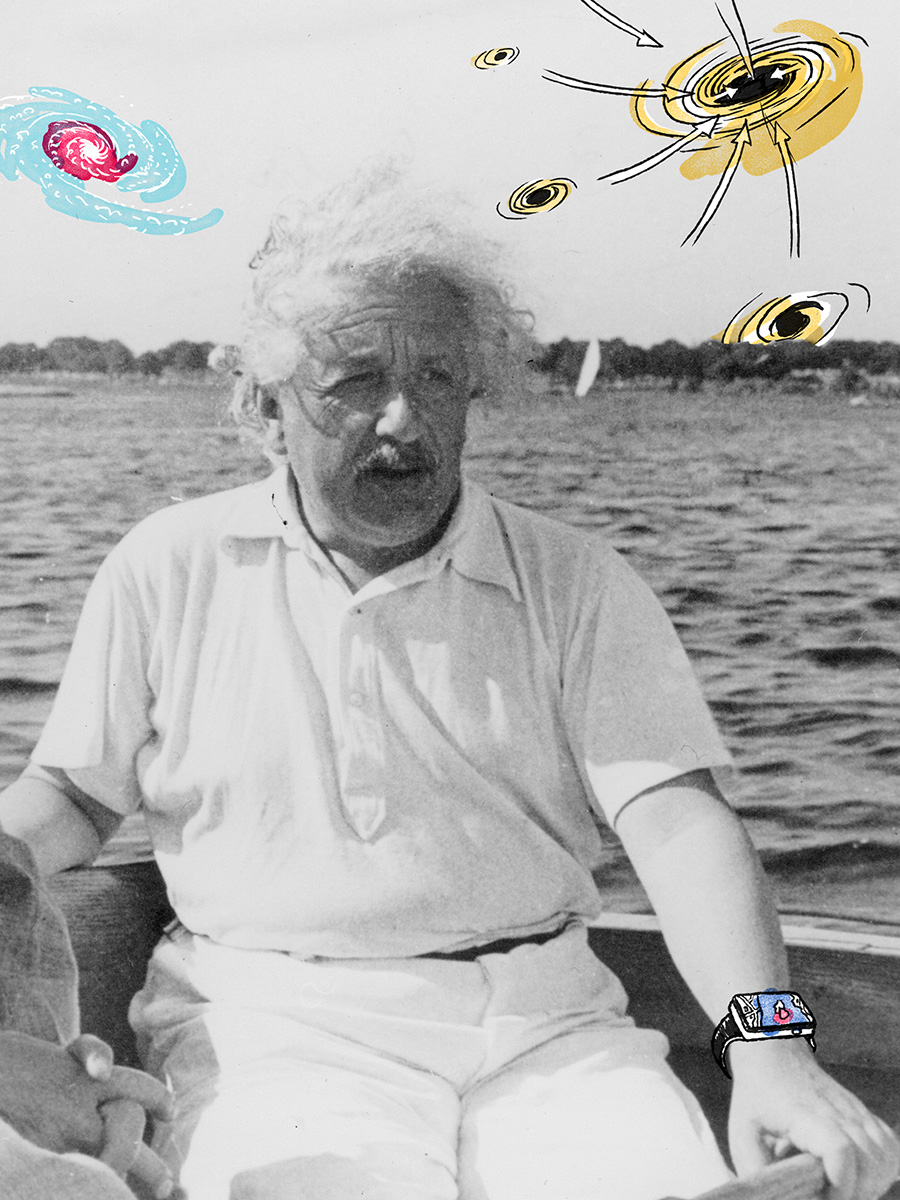Albert Einstein was a student and a professor at ETH Zurich. This year marks the 100th anniversary of his Nobel Prize in Physics. But how much ETH was there really in Einstein? And how much Einstein is there in ETH?

When the 20-year-old ETH student Albert Einstein reported to his practical physics course professor in March 1899, he had a feeling something bad was going to happen. He had hardly attended any classes in the last few months. Instead of carrying out monotonous lab work, Einstein had decided he would rather study the masters of theoretical physics by himself. Jean Pernet was not impressed: Einstein was reprimanded for his poor work ethic and failed the course with a 1, the lowest possible grade. But the young Einstein did not seem to be too dismayed. When the professor asked why he didn’t want to study medicine, law or philology instead, he simply replied: “Because I feel that I have a talent, Herr Professor. Why shouldn’t I at least try physics?”
The fact that we are celebrating the 100th anniversary of Einstein’s Nobel Prize this year – which he won for his services to theoretical physics, and especially for his discovery of the law of the photoelectric effect – is in no small part down to the self-confidence that he demonstrated as a young man.
For ETH, Einstein is part of the furniture today. He is ETH’s most famous alumnus. He is portrayed extensively on the university’s website and a dedicated Einstein tour is available for visitors. Many of his documents are kept in the ETH Library archives. There is an Einstein bust on the Hönggerberg campus. A café on the Polyterrasse bears his name and soon visitors will even be able to have a chat with a digital Einstein. But how much ETH was there in Einstein? How did his time as a student and a professor at ETH influence his subsequent success? And how relevant are his theories today?
“Vagabond and loner”

Albert Einstein started studying at ETH, which was known as the Zurich Polytechnic at the time, in October 1896. At just 17 years of age, he was one of the youngest students. He studied there for four years, focusing on physics and mathematics, but also taking courses in literature and history. Time and time again, he had to be content with being awarded mediocre marks because – as he recalled in his memories of ETH in 1955 – to be a good student “you must be able to grasp things easily; you must be willing to concentrate your energies on everything you are told in the lectures; you must enjoy writing down everything presented in the lectures in an orderly fashion and working on it conscientiously. Regretfully, I realised that I fundamentally lacked all these qualities.” What the young Einstein, who described himself as a “vagabond and a loner”, did have, however, was an insatiable enthusiasm for the physical theories and problems of his time. As these topics were not really taught at ETH at that time – Maxwell’s theory of electromagnetism and Boltzmann’s theory of thermo-dynamics, for example, were both absent from the syllabus – Einstein studied them independently instead. “Even at a very young age, Einstein had a profound thirst for knowledge. He wanted to get to the bottom of things that were not understood at the time and he really challenged the existing physical paradigms,” explains Hans Rudolf Ott, Professor Emeritus of Physics at ETH.
The fact that Einstein managed to graduate at the age of 21, despite his lack of enthusiasm for the curriculum, was in part down to his friend, mathematics student Marcel Grossmann. As Einstein often skipped classes, he relied on Grossmann’s meticulous lecture notes to help him through his studies. However, this wasn’t enough to secure him a good mark at the end of his degree. With an average of 4.91, Einstein’s mark was the second lowest in his class and he was the only student not to be offered a role as a research assistant.
Annus mirabilis in Bern
After graduating from ETH, Einstein took on various odd jobs in order to keep money coming in, including as a tutor in Bern. It wasn’t until June 1902 that he found a position as a technical expert at the patent office in Bern on the recommendation of Grossmann’s father. There, far from the academic establishment and working in his free time, Einstein published no fewer than 33 works in the period up to 1909. These included his most important works on the special theory of relativity and on the light-quantum hypothesis, for which he would later win the Nobel Prize.
It was these publications, several of which turned the world of classical physics on its head, that finally opened up the possibility of a university career for him after numerous disappointments and setbacks: after two years as a professor at the University of Zurich and one year in Prague, Einstein returned to his alma mater, ETH, as Professor of Theoretical Physics in 1912 at the age of 33. “Hallelujah!” wrote Einstein from Prague to his friend, ETH history professor Alfred Stern, when the long-awaited call from Zurich finally came.
Zurich’s contribution to the theory of relativity

“Grossmann, you have to help me or I’ll go mad.” This is how Einstein is said to have greeted his erstwhile saviour from his student days when they met again for the first time after he arrived in Zurich. During his time in Bern and Prague, Einstein had already formulated the key physical concepts for his general theory of relativity. What he was missing was the right way to express it mathematically. In this critical moment, Einstein’s lack of interest in higher mathematics threatened to be his undoing. Thankfully, however, Grossmann – who was now Professor of Mathematics at ETH – was once again there to lend a hand to the desperate Einstein.
Over a period of nine months of extreme exertion and concentration, the two men produced a first draft of the general theory of relativity and gravitation, which was published in 1913 and was very similar to the final version. The equations that Einstein wrote down in his Zurich notebook were more or less correct, but he would only realise their full significance three years later, by which time he was already working as a professor in Berlin. In the end, he left ETH after only a year and a half as he was unable to resist the opportunity to work at the highly regarded Prussian Academy of Sciences. Even the generous offer of a double professorship at the University of Zurich and ETH Zurich in 1918 was not enough to tempt him back to Switzerland.
GPS, lasers and solar cells
Albert Einstein died in April 1955 at the age of 76 in Princeton in the United States, where he had continued his research career from 1933 onwards. However, his revolutionary findings live on in our everyday lives and in scientific research. For example, it is hard to imagine a world without GPS today. It was Einstein who, in his general theory of relativity, anticipated that clocks run more slowly on board satellites than on Earth. If we didn’t take these time differences into account, location information would be out by several kilometres every day.
Furthermore, Einstein’s light-quantum hypothesis and his work on Planck’s theory of radiation set out key principles that would come to be crucial in the development of the now omnipresent laser technology and the generation of electricity using solar cells.
Einstein’s research lives on
“Today’s physics is inconceivable without Einstein. The general theory of relativity is central to our understanding of the world and of the cosmos,” explains Lavinia Heisenberg, who is a professor at ETH’s Institute for Theoretical Physics. Further confirmation of Einstein’s theory has been obtained in recent years: firstly, through the discovery of evidence of gravitational waves, which opens up the possibility of new findings regarding the creation of the universe and its changes. Secondly, an international research team succeeded in making a black hole visible for the first time in the past year. Einstein predicted this phenomenon mathematically, although he did not personally believe in its existence.
Furthermore, cosmologists like Lavinia Heisenberg are still working today on questions that go back to Einstein: for example, scientists are still to clarify whether the theory of relativity also applies to the very small units found in quantum physics. And when it comes to research on the early universe and on black holes, Einstein’s theory leads to singularities which remain unresolved. “These problems will continue to occupy us for many years. Like Newton before him, Einstein isn’t going to drop off the radar any time soon,” says Heisenberg. As it turns out, it proved really worthwhile for that mediocre student when he decided to give physics a try back in 1899. And not just for ETH.
Comments
No comments yet